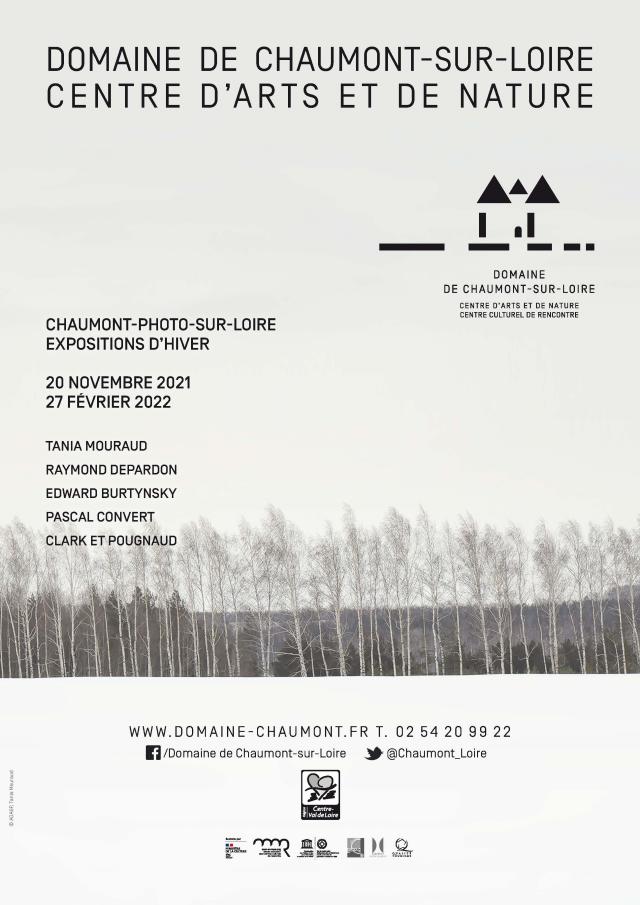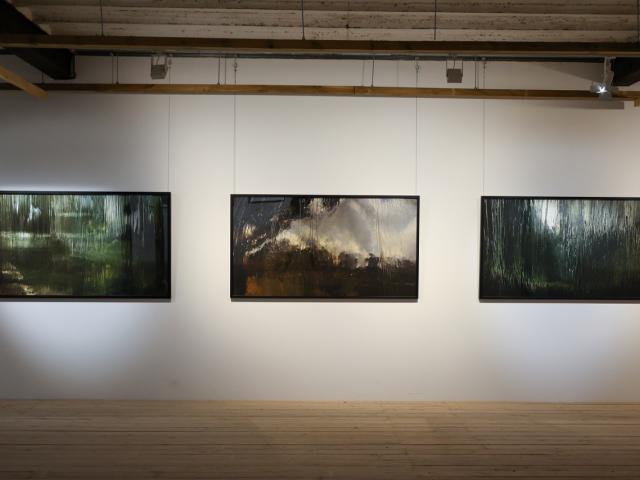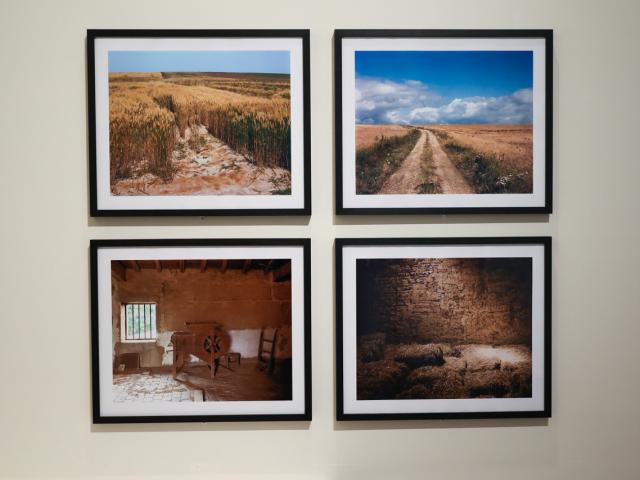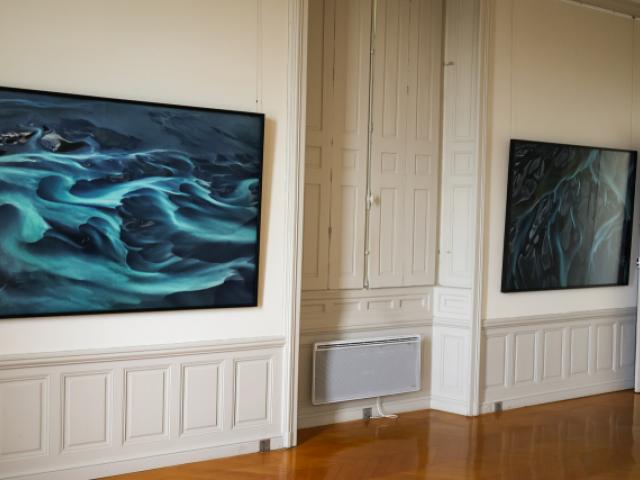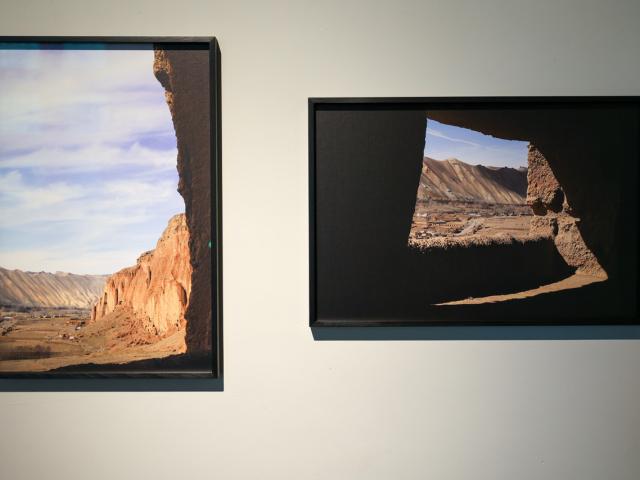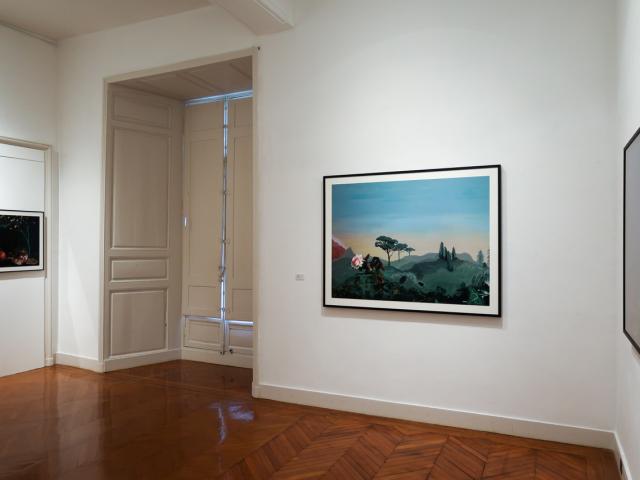2021-2022 Season:
Chaumont-Photo-sur-Loire
20 NOVEMBER 2021 - 27 FEBRUARY 2022
The 4th Chaumont-Photo-sur-Loire brings together five artists or artistic partnerships who are united by their response to landscape, always contemplating what is before them with, as François Cheng has so beautifully put it, “An awakened eye and a beating heart” - whether the landscape concerned is being unreservedly admired for its splendour, or depicted with all the complexity of a beauty scarred by human activity.
Some of the images are ‘traditional’ and hark back to the history of photography. Others have surprises in store for the viewer which will intrigue and perhaps delight them. A balance is achieved between seriousness and lightness, gravity and grace. In addition to sublime beauty, grave and serious questions are also being addressed here. A contemporary exhibition dedicated to landscape cannot avoid examining the subject of ecological disaster. The Domain's audience is aware of the site's commitment to promoting sustainable development through strong and relevant themes, such as the return to Mother Earth (2020) and Biomimicry (2021). Historically, photography has always been closely linked with documenting our world. Being a photographer requires keeping one’s eyes open wide, at all times. Anyone who stays alert today is faced with two extremes. On the one hand, there is the beauty of the world which remains undiminished. On the other, the horror of irreversible damage inflicted by human activities on the environment is all around us. Frenchwoman, Tania Mouraud, and Edward Burtynsky from Canada have chosen to depict these two opposing extremes (both of which characterise our world to the same degree) from a single standpoint. Both present series of images full of sublime, pictorial beauty whose subjects are devastated landscapes. This is not due to unhealthy voyeurism. On the contrary, the power of these intensely beautiful images lies in the fact that they strike a deep, very emotional chord within us.
In the grave context of recent events in Afghanistan and in memory of the destruction of the Buddhas of Bamiyan, Pascal Convert's unpublished images seem an obvious choice to us. These photographs do not show the extraordinary cliff and its lost sculptures (images which were exhibited at the Louvre-Lens and Musée Guimet) but instead what the Buddhas saw and what was seen from the caves. These photographs, the impact of which is so much greater today, allow us to contemplate the magnificent scenery which can be seen from the Buddhas’ cliffs through the sandstone framework of multiple caves carved out by man.
As Jacques Rancière, author of a recent essay completed to accompany Raymond Depardon's series La Ferme du Garet writes in L'Œil esthétique, “There is no rebellion in the face of the intolerable that does not come through the satisfaction of an aesthetically informed gaze.” La Ferme du Garet is more intimate. This sublime selection of images immerses us in the work of one of the greatest photographers and documentary filmmakers in France. These images of a farm, which is like so many others and which has borne witness to the passage of time and the changes experienced on a regional level, as well as on the level of the lives of one man and his family, lead the viewer to savour them with hushed voices and softened eyes. They also make us reflect on what binds people to their environment and on how this link can be damaged or preserved.
Finally, Clark and Pougnaud, a French artistic partnership, showcase their whimsical view of the idyllic landscape which was their Eden for a while. This is depicted with an infectious creative fervour which does not lack depth.
These are five worlds which resonate with us in multiple ways. They are as equally thought-provoking as they are emotionally engaging. We leave feeling more aware and more hopeful than ever, because it seems to us, as the poet Reverdy wrote in ‘Le bonheur des mots’ (La liberté des mers, 1950) “The future is closer, more flexible, more tempting" precisely because it presents risks and threats, but we can also be filled with wonder in the here and now, and act.
